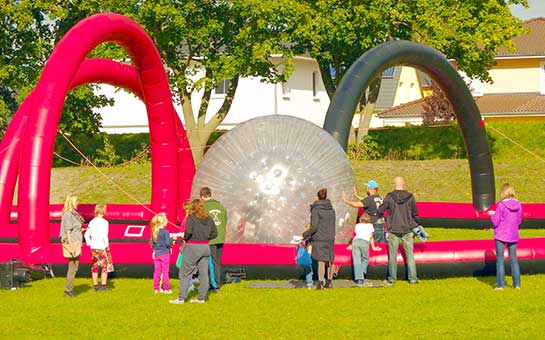Invented in New Zealand, zorbing is a popular recreational activity for a one-of-a kind ride. Zorbing involves securing yourself within a transparent plastic ball and rolling either downhill or on level ground along a course. Whether it’s dry zorbing or hydro-zorbing (see more below), you will need travel insurance for zorbing to protect yourself from massive medical costs in case of an injury or an accident.
Travel Insurance for Zorbing
Many times, adventurous activities look fun when you’re planning them, but you might find yourself backing out in fear at the last minute. Risks are easier to take when you have medical coverage to fall back on. Getting a zorbing travel insurance plan is an effective way to protect yourself against the pocket pinch of medical care in a foreign country. The plan will go a long way in protecting you from the expenses of the medical assistance you might need after going zorbing. With your sports insurance plan in place, you can enjoy your zorbing without a care in the world.
Introduction to Zorbing
There are two types of zorbing: dry zorbing and hydro-zorbing, which is also called water zorbing. Both these variations happen on land with only a small difference. Here is all you need to know about zorbing:
Dry Zorbing: You are strapped with a harness to the wall of the zorb and then rolled down a path.
Water Zorbing: The zorb is filled with five gallons of hot or cold water, depending on the weather, and you roll free. If you’ve ever wondered what it’s like to be inside a washing machine, hydro-zorbing might suit your needs perfectly.
The zorb ball is the main piece of equipment required. It is made of flexible but strong, thick plastic. The outer ball is usually about 10 feet (3 meters) in diameter, and the inner ball is usually about 6.5 feet (2 meters) in diameter. The inner ball is secured within the outer ball with about 100 pieces of rope, and the gap in between absorbs the shock from bumps along the course to give you as smooth a ride as possible.
The zorb is pushed downhill through grass or snow to give it momentum. Most tracks will have railings on either side to keep the zorb on course.
Risks of Zorbing
Zorbing is not considered extremely dangerous, but no sport is without risks. If you are dry or hydro-zorbing, you are exposed to a number of risks, such as the following:
- One possible risk is damage to the zorb as it rolls downhill. A damaged zorb goes off the track and can cause bruises, abrasions, and cuts.
- In case the zorb is deflated due to an oversight by the organizer, the participant is at risk of sustaining minor and major injuries.
- For dry zorbing, you are strapped inside the ball with a harness. If there is a malfunction in the equipment, it can cause the participant to get thrown around and potentially injured while inside.
- Another risk of zorbing is a collision with other zorb balls. The impact could cause injuries as minor as a bruise or as major as a concussion to the participants.
- Weather plays an important role in a zorb ride. If it gets too windy, the ball will trail off course and collide with other obstacles.
An accident in a foreign country means you will be forced to navigate the potentially expensive medical system of that country. Understand the perks of specialized zorbing travel insurance to ensure that your financial risks of costly medical care can be covered in case of an accident on vacation.

